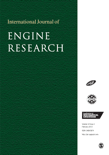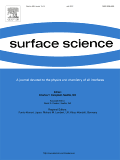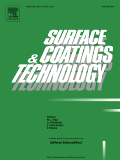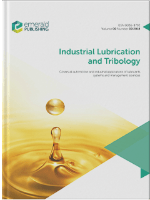
Tribology International
Scope & Guideline
Elevating Knowledge in the Dynamics of Friction and Wear.
Introduction
Aims and Scopes
- Friction and Wear Analysis:
Research focusing on the mechanisms and characteristics of friction and wear in different materials and systems, including metals, polymers, and composites. - Lubrication Technologies:
Studies on various lubrication methods, including liquid, solid, and hybrid lubricants, with an emphasis on environmentally friendly and bio-based lubricants. - Material Science and Engineering:
Exploration of advanced materials, coatings, and composites designed to enhance tribological performance, including high-entropy alloys and nanomaterials. - Computational Tribology:
Application of computational methods and simulations, including molecular dynamics and finite element analysis, to predict and analyze tribological behavior. - Surface Engineering:
Research on surface modifications and treatments, such as texturing and coatings, to improve the tribological properties of components. - Tribocorrosion:
Investigation into the interaction between wear processes and corrosion in various environments, particularly in biomedical and marine applications. - Nanotribology:
Studies focusing on tribological phenomena at the nanoscale, including the behavior of nanomaterials and their applications in lubrication. - Dynamic and Static Analysis:
Analysis of the dynamic and static behaviors of tribological systems, including bearings, seals, and other mechanical interfaces.
Trending and Emerging
- Bio-based and Eco-friendly Lubricants:
An increasing focus on sustainable lubricants derived from natural sources, highlighting environmental concerns and the push for greener technologies. - Nanotechnology in Tribology:
A surge in research related to nanomaterials and their applications in lubrication and wear resistance, emphasizing their potential for improving tribological performance. - Advanced Coatings and Surface Treatments:
Growing interest in innovative coatings and surface engineering techniques to enhance wear resistance and reduce friction in various applications. - Smart and Adaptive Lubrication Systems:
Emergence of intelligent lubrication systems that adapt to changing conditions, utilizing sensors and data analytics for real-time performance optimization. - Tribological Behavior under Extreme Conditions:
Research focusing on tribological performance in extreme environments, including high temperatures, corrosive conditions, and biomedical applications. - Machine Learning and AI in Tribology:
The integration of machine learning and artificial intelligence to predict tribological behavior and optimize lubrication strategies based on extensive data analysis. - 3D Printing and Additive Manufacturing:
Exploration of tribological properties in components produced through additive manufacturing, showcasing the impact of fabrication methods on performance. - Hydrodynamic and Elastohydrodynamic Lubrication:
Increased research on sophisticated lubrication models, particularly in the context of high-speed and high-load applications, enhancing the understanding of fluid film interactions.
Declining or Waning
- Traditional Metal Lubrication:
Research on conventional lubrication methods in metal-to-metal contacts has decreased, likely due to the rise of more advanced materials and eco-friendly alternatives. - Single Material Studies:
There is a waning interest in studies focusing solely on single materials without considering composite or hybrid approaches, as the field moves towards multi-material solutions. - Basic Friction Models:
The reliance on basic friction models without incorporating advanced computational or experimental techniques has diminished, as researchers seek more sophisticated methodologies. - Standardized Testing Methods:
Standardized testing methods for tribological assessments are being supplemented or replaced by more innovative and application-specific approaches. - Fretting Fatigue in Traditional Applications:
Research specifically targeting traditional applications of fretting fatigue is declining, as more attention shifts towards advanced materials and environments.
Similar Journals

Jurnal Tribologi
Connecting academia and industry through cutting-edge tribological insights.Jurnal Tribologi, published by the MALAYSIAN TRIBOLOGY SOC-MYTRIBOS, stands as a pivotal platform for research in the interdisciplinary field of tribology—focusing on the friction, wear, and lubrication of materials. Established in Malaysia and embracing Open Access since 2014, this journal serves a diverse readership and enables worldwide accessibility to cutting-edge research. With an ISSN of 2289-7232, it is indexed across various categories, achieving a commendable Q3 ranking in materials chemistry, mechanical engineering, and several other pertinent fields for 2023. The journal’s commitment to advancing knowledge in its domain is reflected in its circulation of valuable research findings and innovative methodologies, vital for both academic and industry professionals. Researchers, students, and practitioners alike will find Jurnal Tribologi an essential resource, advancing their understanding and application of tribological systems from 2019 to 2024 and beyond.

PROCEEDINGS OF THE INSTITUTION OF MECHANICAL ENGINEERS PART C-JOURNAL OF MECHANICAL ENGINEERING SCIENCE
Shaping the future of engineering with groundbreaking insights.PROCEEDINGS OF THE INSTITUTION OF MECHANICAL ENGINEERS PART C - JOURNAL OF MECHANICAL ENGINEERING SCIENCE, published by SAGE Publications Ltd, stands as a pivotal resource in the field of mechanical engineering, encompassing a wide array of topics from advanced materials to fluid dynamics and system design. With an impact factor reflective of its esteemed reputation, as indicated by its Q2 ranking in the Mechanical Engineering category, this journal serves as a vital forum for researchers, practitioners, and students alike. The journal boasts a rich history, converging research from 1983 to 2024, showcasing innovations and advancements that shape the mechanical engineering landscape. Although it is not an open-access publication, the insights and studies published herein provide invaluable contributions to the engineering community, fostering knowledge exchange and collaborative advancements. Researchers seeking a platform for their pioneering work will find Part C an ideal venue to disseminate their findings and engage with peers in this dynamic field.

Acta Metallurgica Sinica-English Letters
Innovating Industrial Engineering Through Rigorous Scholarship.Acta Metallurgica Sinica-English Letters, published by the Chinese Academy of Sciences, Institute of Metal Research, is a premier international journal that has been fostering the advancement of knowledge in the fields of Industrial and Manufacturing Engineering and Metals and Alloys since its inception in 1997. With a commendable impact factor and ranking within the top quartiles (Q1) of leading Scopus categories, this journal serves as a vital platform for researchers and professionals to disseminate innovative research findings and groundbreaking methodologies. Notably recognized with a Scopus rank of #34 out of 176 in Materials Science and rank #81 out of 384 in Engineering, it provides a robust space for high-quality, peer-reviewed articles, thus bridging the gap between theoretical advancement and practical application in metallurgy and materials science. Although currently not an open-access journal, its rigorous editorial standards and comprehensive scope ensure that only the most impactful research contributes to the scientific community and industry advancements globally. Acta Metallurgica Sinica-English Letters is an essential read for anyone eager to stay informed on cutting-edge developments within these crucial domains.

International Journal of Engine Research
Shaping the Future of Engine Technology and DesignWelcome to the International Journal of Engine Research, an esteemed publication dedicated to advancing the fields of Aerospace Engineering, Automotive Engineering, Mechanical Engineering, and Ocean Engineering. Published by SAGE Publications Ltd and based in the United Kingdom, this journal has earned a prestigious reputation, consistently ranking in the Q1 quartile in several engineering categories as of 2023. The journal's impact is evident through its high Scopus rankings, positioning it within the top 25% of global research in Aerospace and Automotive engineering, and within the top 20% for Mechanical engineering. With a commitment to publishing rigorous, peer-reviewed research from 2000 to 2024, the International Journal of Engine Research plays a vital role in fostering innovation and collaboration within the engineering community. Although this journal does not offer open access, it remains a critical resource for researchers, industry professionals, and students striving to deepen their understanding in these dynamic fields.

TRIBOLOGY LETTERS
Driving Progress in Mechanical Engineering and Material ScienceTRIBOLOGY LETTERS is a distinguished peer-reviewed academic journal published by SPRINGER/PLENUM PUBLISHERS, focusing on advancements in the field of tribology and its applications across various engineering domains. With an ISSN of 1023-8883 and an E-ISSN of 1573-2711, this journal serves as a crucial platform for disseminating cutting-edge research and technological innovations, operating from its esteemed headquarters in the United States. The journal is categorized in the Q2 quartile across multiple domains including Mechanical Engineering, Mechanics of Materials, Surfaces and Interfaces, and Surfaces, Coatings and Films, showcasing its significant impact within the respective fields. With Scopus rankings placing it in the top 25% for Engineering and top 20% for Physics and Astronomy related categories, TRIBOLOGY LETTERS continues to be an essential resource for researchers, professionals, and students looking to deepen their understanding of tribological phenomena and enhance their applications in industry and technology. While it does not currently offer open access options, the journal continues to invite high-quality contributions that contribute to the ongoing dialogue and advancement in tribological science.

SURFACE SCIENCE
Advancing Knowledge in Surface EngineeringSURFACE SCIENCE is a prominent journal in the fields of Condensed Matter Physics, Materials Chemistry, and Surface Engineering, published by Elsevier in the Netherlands. With an ISSN of 0039-6028 and an E-ISSN of 1879-2758, the journal encompasses a wide range of research related to the physical and chemical properties of surfaces and interfaces, serving as a valuable resource for researchers, professionals, and students alike. As of 2023, it holds a Q3 ranking across multiple categories, indicating its significant contribution to its respective fields, despite room for improvement in its overall impact within the scientific community. Researchers will find that SURFACE SCIENCE provides a platform for innovative and interdisciplinary studies, making it essential for those looking to stay updated on emerging trends and technologies in surface science. While the journal is currently not open access, its reputation and robust indexing reinforce its importance in advancing scientific knowledge and fostering new discoveries.

Friction
Pioneering Research in Mechanical Engineering and Materials ScienceFriction is a renowned peer-reviewed open-access journal published by TSINGHUA UNIVERSITY PRESS, dedicated to the intricate field of Mechanical Engineering and the specialized areas of Surfaces, Coatings, and Films. Since its inception in 2013, the journal has rapidly ascended to prominence, achieving Q1 rankings in both categories as of 2023, thereby securing its place as a leading resource for researchers and professionals alike. With its impressive Scopus rankings—26th out of 672 in Mechanical Engineering and 10th out of 132 in Materials Science—the journal exemplifies outstanding academic rigor and contribution to its field. As part of its commitment to accessibility, Friction offers open access to all published articles, ensuring that groundbreaking research is freely available to scholars and practitioners worldwide. By bridging theoretical insights with practical applications, the journal aims to foster innovation and collaboration within the engineering community and beyond.

SURFACE & COATINGS TECHNOLOGY
Transforming Ideas into Advanced Coating SolutionsSURFACE & COATINGS TECHNOLOGY is a premier academic journal that has been at the forefront of research and innovation since its inception in 1986, diligently published by Elsevier Science SA. With an impressive range of studies focusing on surface and coatings technologies, the journal has established itself as a leading platform within the fields of Chemistry, Condensed Matter Physics, and Materials Science. Notably, it holds a distinguished Q1 ranking in multiple categories, showcasing its relevance and high impact in the academic community. Furthermore, it is recognized for its rigorous peer-review process and is indexed in esteemed databases, maintaining its strong position with a ranking of #17 in Surfaces, Coatings, and Films. Although the journal does not currently offer open access options, it continues to be a crucial resource for researchers, professionals, and students seeking insights into cutting-edge developments and applications in the domain of surface engineering. With a commitment to advancing knowledge across these disciplines, SURFACE & COATINGS TECHNOLOGY is an essential read for anyone interested in the latest trends and technologies shaping the industry.

Lubricants
Unlocking the potential of innovative lubrication solutions.Lubricants, published by MDPI, is a prestigious, peer-reviewed open-access journal that has been dedicated to advancing the field of lubrication technology since its launch in 2013. With its E-ISSN of 2075-4442, the journal is based in Switzerland and has rapidly established itself as a vital resource in the domains of Mechanical Engineering and Materials Science, achieving Q2 quartile rankings in both fields as of 2023. Lubricants provides a platform for the dissemination of innovative research, offering insights into the performance, formulation, and applications of lubricants across various industries. With a commitment to fostering collaboration and knowledge-sharing, this journal attracts a global audience of researchers, professionals, and students eager to explore the latest developments in lubrication technologies. Open access since its inception, Lubricants ensures that all published works are freely available, promoting greater visibility and accessibility of cutting-edge research in the field.

INDUSTRIAL LUBRICATION AND TRIBOLOGY
Transforming energy efficiency through lubrication excellence.INDUSTRIAL LUBRICATION AND TRIBOLOGY, published by EMERALD GROUP PUBLISHING LTD, is a distinguished journal dedicated to the fields of lubrication science and tribology, examining the fundamental aspects and innovative applications that enhance energy efficiency and mechanical performance in industrial settings since its inception in 1948. With an ISSN of 0036-8792, the journal is indexed in recognized databases, and its significant contributions have earned it a respectable Q3 category ranking in the disciplines of Energy, Mechanical Engineering, and Surfaces, Coatings, and Films. Researchers and professionals engaged in these fields will find valuable insights and cutting-edge research that drive innovation and improve the sustainability of industrial practices. While the journal does not currently offer open access options, it continues to be a pivotal platform for disseminating knowledge among scholars and practitioners. Its ongoing relevance in advancing tribological science highlights the critical role of lubrication in enhancing machine longevity and operational efficiency.